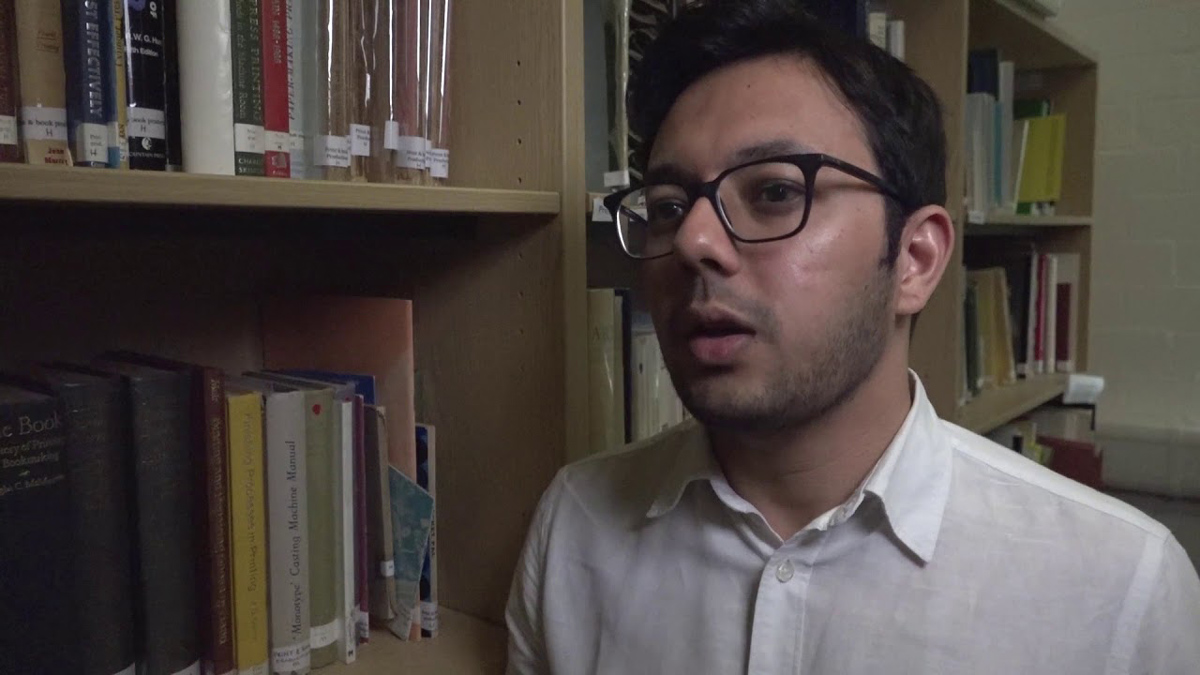Title of PhD
Devanagari Type in the Twentieth Century: Motivations, Imperatives, Technology, and the Design Process
Briefly describe your area of research
My research addresses the historical framework of twentieth-century technology for Devanagari typography.
I explore how, why and where initiatives took place to enable text-setting in this Indian script – right up to the digital age – and the motivations, imperatives and design processes behind these developments.
My argument is that the history of the "design process" is more instructive than the history of finished products – the process in its entirety offers more valuable information on scientific, sociocultural and political levels, compared to narratives of technological innovation and success, on which existing history and critical analysis in the field has largely focused.
Why did you select Reading?
I chose Reading for the Department of Typography & Graphic Communication as my research could benefit from the guidance of a faculty renowned for its rigour and excellence in the field.
The Department's Non-Latin Type Collection was an additional, equally crucial factor in my choice, knowing that my research would benefit from direct access to it.
The University of Reading offered an academic setting that combined practice-oriented research and invaluable archival resources.
What do you enjoy about studying at Reading?
Reading has a diverse student community and I have enjoyed meeting and getting to know students from all over the world. It has broadened my understanding and introduced new ways of looking at concerns that research students share.
I have particularly enjoyed, and learned a lot from, the opportunities for close contact with researchers and faculty from various disciplines, including my own, who have provided critical intellectual companionship throughout the course of my studies.
Reading provides an academic community and support structure whose warmth and generosity counters any kind of bad weather!
What has been your biggest challenge since starting your research?
The biggest challenge has been to find effective ways to communicate the wider relevance of my research, and to integrate a diversity of perspectives within it.
For a discipline at the crossroads of design, technology, industry, commerce, and most crucially the representation of language – with deep political and cultural dimensions – typographic research has long remained on the sidelines of more wide-ranging, interdisciplinary work.
The challenge has been to reassess this position and situate my research in the thick of constructive debates across disciplines, to show that it has much to contribute towards an understanding of many larger issues.
What advice would you give a new postgraduate researcher?
Not to be overwhelmed by the multitude of directions and possibilities of enquiry that open up at every new step of one's research, but instead to consider all options with intelligent selectivity.
It is also easy to get trapped within the narrow confines of one's own research interest – at times it is useful to question the relevance and wider implications of one's work, the diversity of its possible contexts.
Lastly, I would suggest discussing frequently with colleagues and peers in an open manner, and to remain excited about the research, a PhD is not the end but a beginning.
Where do you want to be in five years' time?
In the next five years, I want to be at the forefront of type-related research, working towards the transformation of my discipline into a more broadly appreciated field that contributes to new areas of scholarship and feeds usefully into many others.
I would want to do this by extending and disseminating the emphasis on research-informed practice that I've learnt at Reading – especially in India, where type design and typographic research are in formative stages. I hope to actively publish and create opportunities for wider appreciation of typographic research through a programme of exhibitions and conferences in the coming years.
